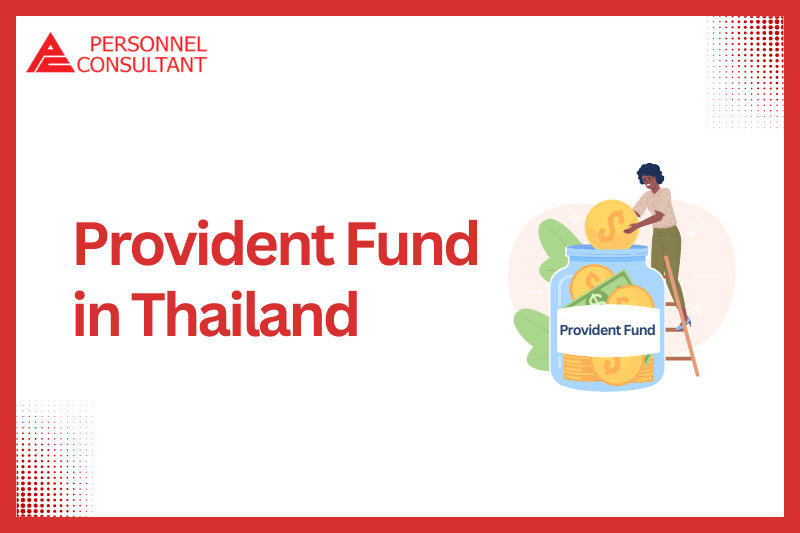
What is a Provident Fund?
The Provident Fund is a fund established for voluntary participation between companies and employees, serving as a source of funds for employees in cases such as resignation, retirement, illness, or death. Governed by the Provident Fund Act, the Thai government regulates the Provident Fund, ensuring the rights of employees within the fund.
(Source: Krungsri Asset)
At Krungsri Asset, it is defined as follows. The Provident Fund (or Retirement Fund) can be thought of as Thailand’s retirement savings system.
Employees contribute to the fund through deductions from their salaries, typically ranging from 2% to 15%, and the company matches or contributes a similar percentage to the fund. When an employee retires, they can withdraw 100% of their contributions along with any investment returns earned by the fund (though there is a risk of principal loss).
The portion contributed by the company can typically be withdrawn based on predetermined rates, often depending on the length of service at the time of retirement.
What are the advantages and drawbacks of introducing a Provident Fund?
Benefits for the company:
・Serves as an incentive for employees to stay long-term.
・Company contributions can be accounted for as expenses.
・Attracts talented individuals by offering attractive welfare benefits to job seekers.
Drawbacks for the company:
・Company contributions become a cost.
Benefits for employees:
・Tax deduction is possible.
・Since the accumulated funds cannot be withdrawn until cancellation or retirement, it ensures reliable savings.
・Along with investment returns, the company’s contributions are added upon retirement (based on length of service), providing financial benefits.
Drawbacks for employees:
・There is a risk of principal loss.
・It is not easy to withdraw the accumulated funds easily.
Should it be introduced immediately?
The Provident Fund is positioned as an optional employee benefit, and not all companies participate in it. Especially for newly established companies that have just entered the market, the cases of introducing it are few. For companies that have recently entered the market, it may be appropriate to introduce it once the business has started to gain traction.
For companies that have established themselves and are operating smoothly, it would be beneficial to consider introducing it to enhance employee satisfaction. Some job seekers also consider the presence of a Provident Fund when choosing a company.
How many Japanese companies have introduced it?
According to our “2022 Survey of Salary and Welfare Benefits in Japanese Companies in Thailand,” approximately 60% of manufacturing companies and 40% of non-manufacturing companies have introduced the Provident Fund. We also have statistical data on the proportion of company contributions, so if you need detailed information, please provide your details via the form below.
For those who are seeking personnel consulting statistical data, please enter your information below.
<Application Form for Salary and Benefits Statistical Data for Japanese Companies in Thailand>
References:
https://www.krungsriasset.com/JP/Provident-Fund/
Youtubeタイ前線 タイの退職金?解雇補償金?プロビデントファンド?失業保険!?「タイ駐在の方必見」










